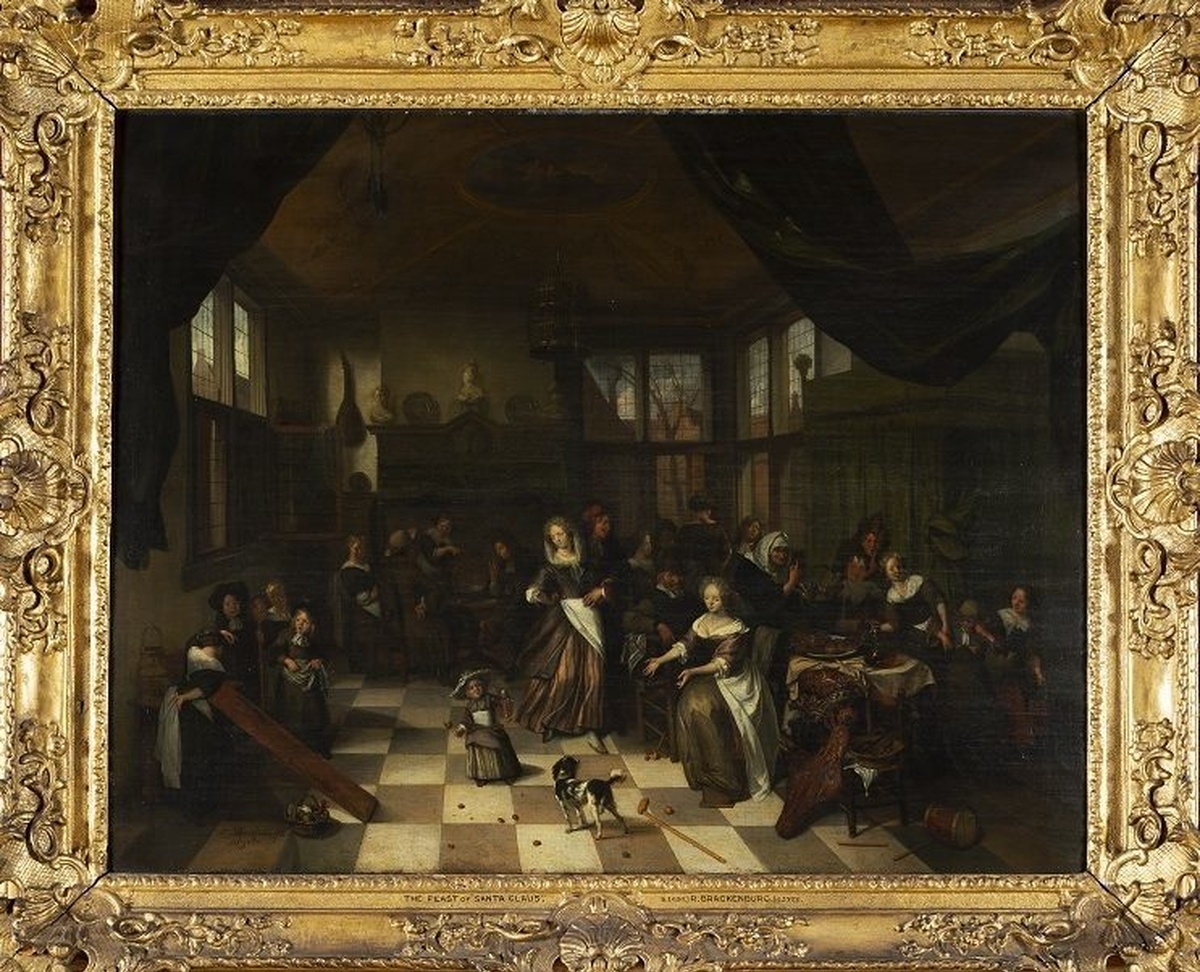The Feast of St. Nicholas by Richard Brackenburgh (1698)

Happy St. Nicholas Day! Or, as the Dutch would say, Prettige Sinterklaasdag! In honour of this occasion, today we're taking a look at a curious work from the Bute Collection which manages to connect a 4th century Greek Bishop, a 17th century Dutch celebration, and a timeless holiday legend.
The Feast of St. Nicholas (1698) by Richard Brakenburgh is one of the many exceptional examples of Dutch Golden Age art at Mount Stuart. It was acquired in the mid-1700s by John Stuart, 3rd Earl of Bute, an avid collector of Dutch painting and the founder of the Bute Collection. As the title suggests, the picture illustrates an ordinary middle class Dutch family celebrating St. Nicholas Day, a traditional winter festival that originates in the late Middle Ages. Today, this occasion is still widely observed in many Western European countries on 6th December– and in Holland, on the eve of 5th December.
While customs vary by region, St . Nicholas has long been an occasion for exchanging presents, and in particular, gifting sweets, toys and treasures to good little girls and boys (and occasionally punishing naughty children with coal or bundles of twigs). These traditions were shaped by the folklore surrounding the figure of St. Nicholas, the patron saint of children and the precursor of the more modern mythical gift-giver, known variously as Sinterklaas in Holland, Santa Claus in America and Father Christmas in the UK.
The real ‘Old Saint Nick’ was the Bishop of Myra, Lycia (modern day Turkey) in the early 4th century. He was renowned for his charitable deeds, and in particular, for one special act of generosity. According to legend, a poor local man had three daughters for whom he could not afford to provide dowries. Wishing to save the girls from destitution, St. Nicholas purportedly snuck to their house at night and threw sacks of gold coins into their window – or, in other accounts, down the chimney, where they fell into the girls’ stockings which hung by the fire to dry. From this, of course, we get the practice of hanging the stockings “by the chimney with care”. While St. Nicholas Day itself did not emerge until many centuries later, the customs inspired by this legend have had remarkable longevity. Even after the Reformation in the 17th century, which largely saw the abolishment of Catholic feast days in Protestant countries, St. Nicholas Day persisted. Indeed, its enduring popularity in Holland is captured in Brakenburgh’s painting.
The Feast of St. Nicholas is a prime example of what is often referred to as a ‘Merry Company’ – a painting depicting a group of people enjoying themselves, generally seated in an interior, eating, drinking or making music. St. Nicholas Day was a popular subject for these types of works, serving as the perfect pretext for merry-making. It was a subject revisited several times by the Haarlem-based artist Brakenburgh, and by his more famous contemporary, the Leiden master, Jan Steen. Fine examples by both artists are currently at the Rijksmuseum in Amsterdam.
The Bute Collection picture contains a few details which distinguish it as a St. Nicholas Day celebration, rather than just a generic ‘Merry Company’. The abundance of children is our first clue. In the centre of the scene, we find a little girl proudly brandishing a doll, a gift earned for good behaviour. To the left, we see a group of children playing with their new toy; a game in which chestnuts are rolled down a decorated plank of wood. However, on the right, a weeping boy is excluded from the fun. His mother holds up a shoe containing a bundle of twigs – a sign that he’s been naughty. Meanwhile, all around them, the adults eat, drink, dance and laugh – all in all, not unlike a modern day Christmas celebration.
Object of the Month: December 2019
